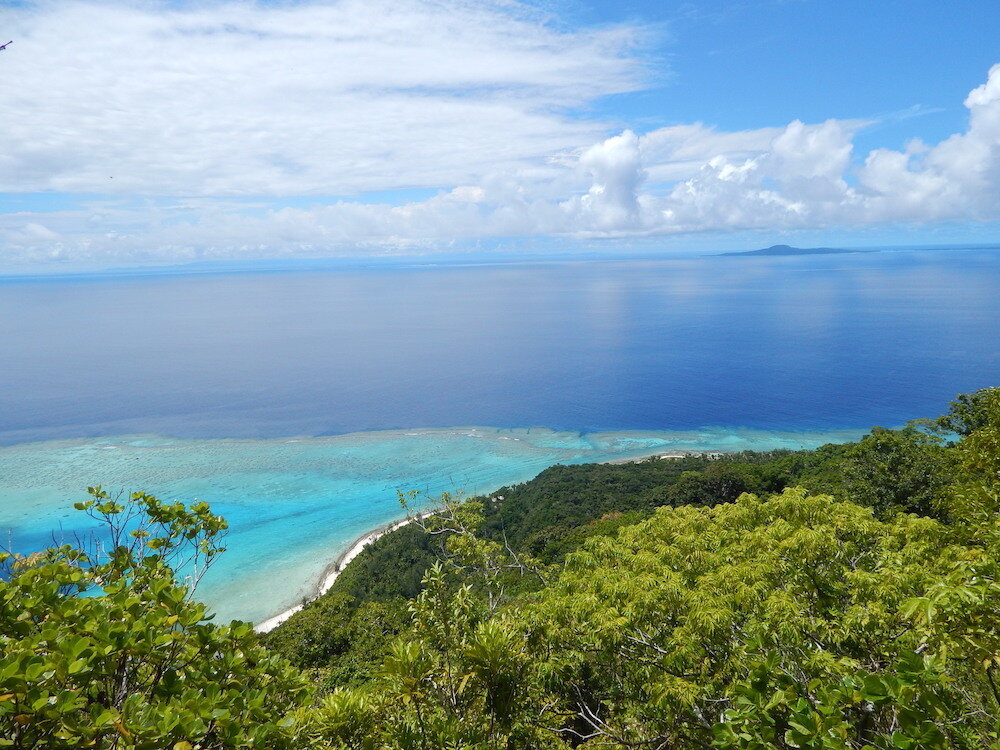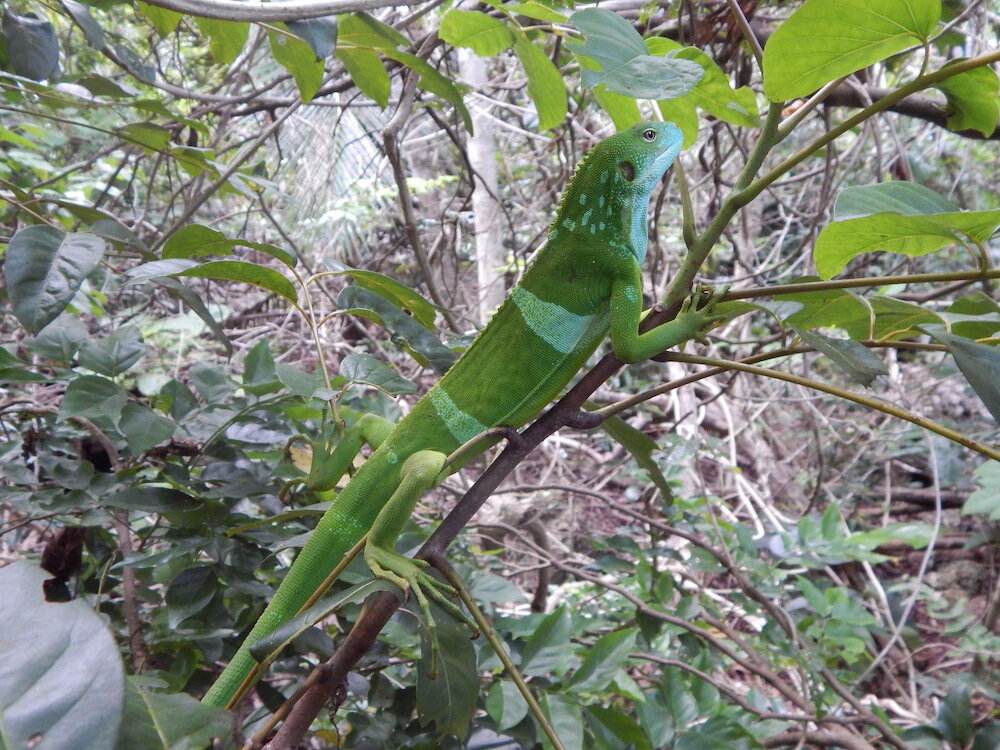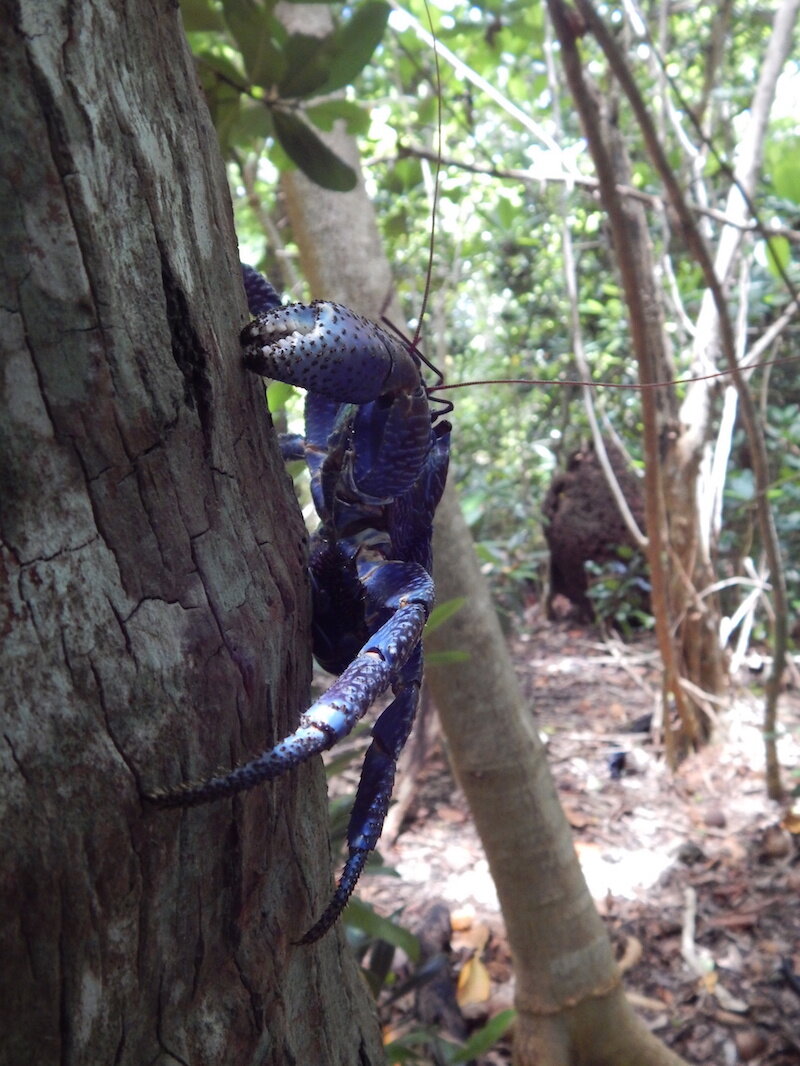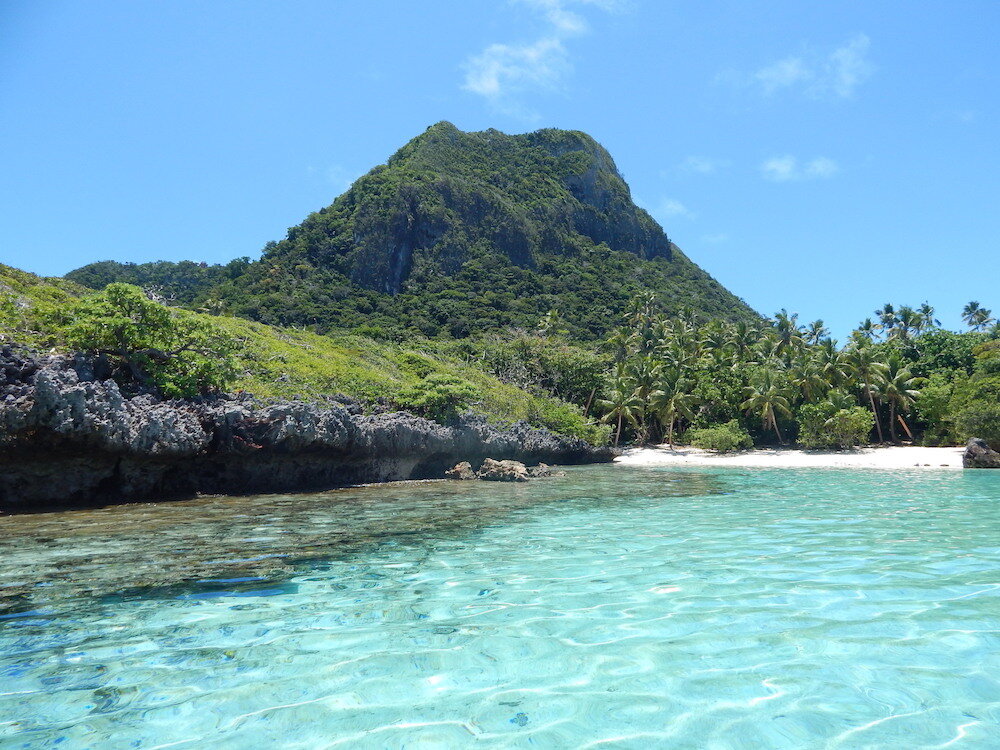A Jurassic Journey: uncovering the untouched island of Vatuvara
This is the first time a full biological survey has ever been performed on this remote, almost untouched island in the South Pacific. The intriguing and fascinating results have redoubled the Vatuvara Foundation’s efforts to safeguard this lush wildlife haven.
The island of Vatuvara perfectly embodies the intrigue and beauty of the South Pacific islands. Located in the north of Fiji’s Lau group, the 800-hectare island has been uninhabited for most of human history. This is due in part to the absence of a permanent water source – but the sharp, unforgiving coral terrain certainly doesn’t help.
For a time, the island hosted a fortified village atop the 300 metre summit – no doubt a strategic lookout point for Fijian warriors. But apart from a desperate attempt at coconut production during Fiji’s plantation era, Vatuvara has largely been spared the impacts of human influence. And that includes many invasive species common on other South Pacific islands – making Vatuvara an invaluable refuge for wildlife.
The view from Vatuvara Island's 300 m limestone volcanic summit. © Steve Cranwell/Birdlife International Pacific.
Despite the detailed knowledge of the indigenous Fijians, practically the only formal scientific account of the island comes from the remarkable Whitney Expeditions, which visited Fiji in 1924, identifying the endemic Fiji Banded Iguana (Brachylophus fasciatus) among other native flora and fauna species.
Now under the care of Vatuvara Private Islands, the island is protected as a nature reserve. In November, BirdLife International Pacific, together with NatureFiji-MareqetiViti (BirdLife Partner in Fiji) and the US Geological Survey, joined the Vatuvara Foundation to conduct a pioneering four-day survey.
A team of scientists from Birdlife International Pacific, NatureFiji-MareqetiViti, US Geological Surveys and Vatuvara Foundation arrive in Northern Lau to embark on a four day terrestrial survey. © Nunia Thomson-Moko/NatureFiji-MareqetiViti.
The survey initially focused on the island’s reptiles, in particular the Banded Iguana – currently threatened with extinction – and a snake the Pacific Boa (Candoia bibroni). During the night, several sleeping reptiles were stealthily extracted from the branches above for identification. The branches clearly marked to enable a safe return after photographic records were made.
Fiji Banded Iguanas were carefully extracted from branches and safely returned after identification @ Steve Cranwell/Birdlife International Pacific
Coconut crabs (Birgus latro) proved to be a very visible part of the island fauna. Although active throughout the day, it was at night that the forest came alive to a slow, deliberate dance as the world’s largest arthropods (weighing up to 4kg and a metre from leg to leg) shuffled about the forest floor, or climbed trees and vertical rock faces in search of sustenance. Once common throughout the Pacific and Indian Oceans, these unique, long lived terrestrial crabs, who can survive for 40-60 years, are under threat. Considered a local delicacy, these crab populations are now increasingly confined to remote inaccessible islands or locally protected areas.
Vatuvara is an island for birds. Dawn and dusk resounded to a cacophony of calls as the Wattled Honeyeater (Foulehaio carunculatus), along with the 20 other species we identified, made their presence known. Almost all were forest birds, a validation of the quality of Vatuvara’s forest. A particularly encouraging sighting was the Shy Ground Dove (Alopecoenas stairi), threatened with extinction elsewhere due to introduced predators such as feral cats and rats.
In terms of invasive species, no evidence of cats, pigs, goats, Black rats (Rattus rattus), mongoose, invasive ants or any of Fiji’s usual suspects could be found. However, the Pacific rat (Rattus exulans) was present. This non-native rat predates small birds and their eggs, as well as many of Fiji’s invertebrates and fauna.
The unique and threantened coconut crab climbs a tree in search of sustenance. © Steve Cranwell/Birdlife International Pacific.
All good surveys pose as many questions as they answer, and something of a surprise for Vatuvara was the notable absence of seabirds, generating numerous hypotheses, including what influence Coconut Crabs may pose. Ornithologist, Vilikesa Masibalavu, also noted an unusual phenomenon among the Island’s Golden Whistlers (Pachycephala vitiensis). They weren’t hard to find – but they were strangely silent, and not a single male could be found.
While much still remains to be discovered on Vatuvara, the survey highlighted the Island’s vital importance to Fiji’s natural history. It was found to hold a wealth of diverse native plants and wildlife increasingly under threat on other islands. Future work will build on this baseline, tracking trends in birds, coconut crabs and reptiles and ensuring harmful invasive species don’t establish. In protecting the island, the Vatuvara Foundation have made a visionary commitment to safeguarding a crucial haven for Fiji’s wildlife.
Vatuvara Island is a crucial safe haven for Fiji's wildlife. ©Steve Cranwell/Birdlife International Pacific.
A huge thank you to the management and staff of Vatuvara Private Islands for the survey logistical support and technical partners US Geological Survey, NatureFiji-MareqetiViti, Vatuvara Foundation, Vilikesa Masibalavu, Alivereti Naikatini and BirdLife Int. Pacific for conducting this expedition. This work would not have been possible without funding and in-kind contributions of Vatuvara Private Islands, Vatuvara Foundation and the David and Lucile Packard Foundation.





